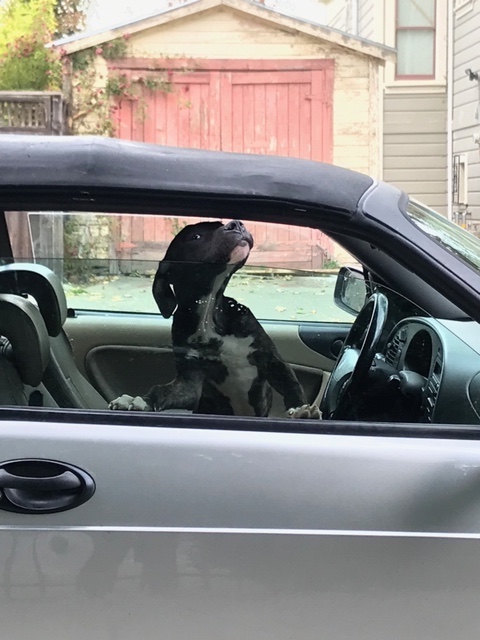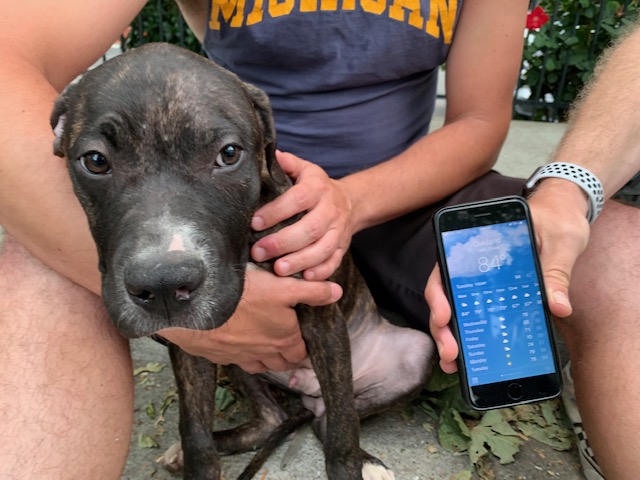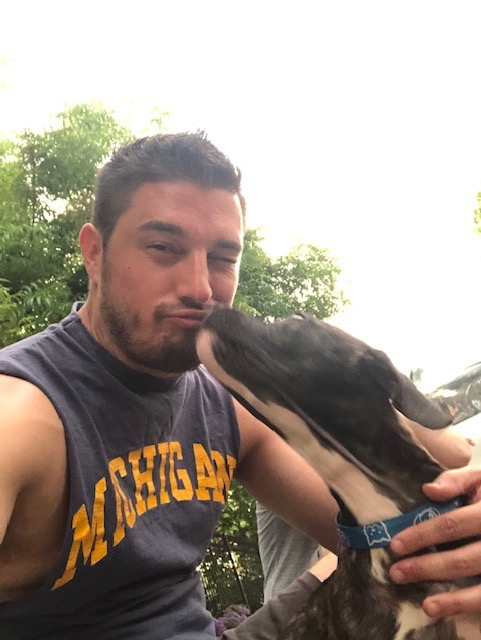This past week saw record heat across the Bay Area and Northern California. Exposure to extreme heat is very dangerous to people, especially seniors, children and people without access to shelter. Similarly, heat can be deadly for animals.
The air temperature inside a car rises quickly compared to outside ambient air temperature on a hot day. The belief that a 5-10 minute stop inside a local grocery store or bank is harmless to pets and children is often a deadly mistake. Never leave children or pets in a car. Even if the windows are cracked, sustained interior temperatures lead to accelerated dehydration and heat-related illnesses, including heat stroke.
In 2016, Assemblymember Marc Steinorth and other legislators successfully passed Assembly Bill 797, which protects good samaritans from civil and criminal liability for forcible entry into a vehicle, provided that the process outlined in the statute is followed.
This past week, several Emeryville residents contacted me about a puppy locked in a hot car parked just across the Emeryville border in an adjacent Oakland neighborhood. The residents had called both 9-1-1 and Oakland non-emergency but neither were able to respond. Being familiar with the provisions of AB 797, I went over to provide assistance. In the days since then, I've received a number of messages from people thanking me for taking action. I realized that everyone wants to do something to help in these situations, but almost nobody knows how the law protects them if they take action correctly. In the interest of a more informed Emeryville community, here are the steps you must take under AB 797 in order to be protected from civil and criminal liability for breaking into a car to rescue an animal in distress.
STEP 1: Reasonable Belief of Danger or Suffering
You must have "a reasonable belief that the animal's safety is in immediate danger from heat, cold, lack of adequate ventilation, lack of food or water, or other circumstances that could reasonably be expected to cause suffering, disability, or death to the animal." CA Penal Code 597.7(b)(1)
The reasonableness of your belief will be based on the factual circumstances. The temperature is just one factor. Is the animal panting/breathing rapidly? Is it lying on the floor of the car or does it have its face near the open window as if its trying to get air? In the case of the dog I assisted, witnesses had seen the puppy in the car for over an hour and it was trying to get air by putting its face up to the slightly open window. One resident reported seeing the owner beat the dog with a tennis racket the day before. The combination of outside air temperature, the dog's efforts to get fresh air and the statements from the neighbor were what I used to form my reasonable belief that animal was in immediate danger from heat and lack of adequate ventilation. Photo documenting the conditions you observe before you proceed can support your reasonable belief.

STEP 2: Car Must Be Locked
You must determine that "the vehicle is locked or there is no other reasonable manner for the animal to be removed from the vehicle." CA Penal Code 597.7(b)(2)(A)
You complete this step by simply trying to open each door to the vehicle to free the animal without having to use any additional force. In my case, both doors were locked.
STEP 3: Good Faith Belief That Entry Is Necessary
You must have "a good faith belief that forcible entry into the vehicle is necessary because the animal is in imminent danger or suffering harm if it is not immediately removed from the vehicle, and, based upon the circumstances know to the person at the time, the belief is a reasonable one." CA Penal Code 597.7 (b)(2)(B)
The requirement here requires you to trust your instincts based on the information you have available to you at the time. You are not required to think of every possible alternative action or step you could take to act in good faith. If you believe the animal is in danger or suffering, and that belief is genuine, you may forcibly enter the vehicle.
STEP 4: Call the Police
You must have "contacted a local law enforcement agency, the fire department, animal control, or the "911" emergency service prior to forcibly entering the vehicle."CA Penal Code 597.7(b)(2)(C)
This is an easy step and should be done as soon as you have concern that the animal is in danger or suffering. In our case, residents had already called Oakland Police and the non-emergency line without success. I also contacted the Emeryville Police Department and our Police Chief to let them know about the situation. A member of EPD stood by as a courtesy to witness the vehicle entry even though they had no jurisdiction to take any action. You do not need to wait for police to arrive before you forcibly enter the vehicle. In my case, I felt it was helpful as evidence of my actions, but the law didn't require me to take that step.
STEP 5: Use No More Force Than Necessary
You must use "no more force to enter the vehicle and remove the animal from the vehicle than was necessary under the circumstances."CA Penal Code 597.7(b)(2)(E)
In my case, I was able to get my arm through the opening at the top of the window by virtue of the car being a soft-top convertible without a door frame above the glass. I reached the door lock and opened the door. The alarm went off but this was the least forceful means necessary to get into the vehicle. This provision exists to prevent unnecessary property damage in circumstances like mine. If there was no other way to get in besides breaking the window, I would have been within my right to break the car window to get the dog. One neighbor filmed how we removed the dog from the vehicle.
[wpvideo 802yP2nw]
STEP 6: Remain With Animal & Vehicle
You must "remain with the animal in a safe location, out of the elements but reasonably close to the vehicle, until a peace officer, humane officer, animal control officer, or another emergency responder arrives."CA Penal Code 597.7(b)(2)(D)
After rescuing the dog from the vehicle, we waited for about 30 minutes until Oakland Police gave us instructions. The puppy's body was very hot to the touch. We took a photo of the dog alongside an image of a neighbor's phone that showed the time and temperature at the time we had finally removed him from the vehicle.

STEP 7: Turn the Animal Over to Authorities
You must "immediately turn the animal over to a representative from law enforcement, animal control, or another emergency responder who responds to the scene."CA Penal Code 597.7(b)(2)(F)
We gave the dog to Oakland Animal Services when instructed to do so by Oakland Police.
The dog is currently in the care of Oakland Animal Services, where it is recovering. Neighbors reported to authorities that this animal was repeatedly subjected to physical abuse and had been left in the car both overnight and for long periods of time on prior occasions. If you have information about this dog or witnessed acts of cruelty or neglect toward the animal, Oakland Animal Services is currently conducting an investigation and would like to take your statement. Please contact Denise BonGiovanni at (510) 535-4895 to make a statement.
Special thank you to the three awesome Emeryville residents who reached out asking for my help. I have not identified them in this post to protect their identities during the investigation. On behalf of our community, thank you for taking action. Together, we made a difference.

I hope you found the above information helpful. Never be afraid to take action to do the right thing, especially if you can work together with others as a team - you might just save a life!
Cheers,
John